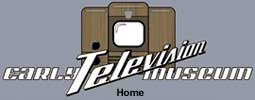Early Color Television DeForest Mechanical Color System The following is a description of Lee DeForest's mechanical color system, developed about 1948, courtesy of Ralph Baer:
|
 |
Early Color Television DeForest Mechanical Color System The following is a description of Lee DeForest's mechanical color system, developed about 1948, courtesy of Ralph Baer:
|